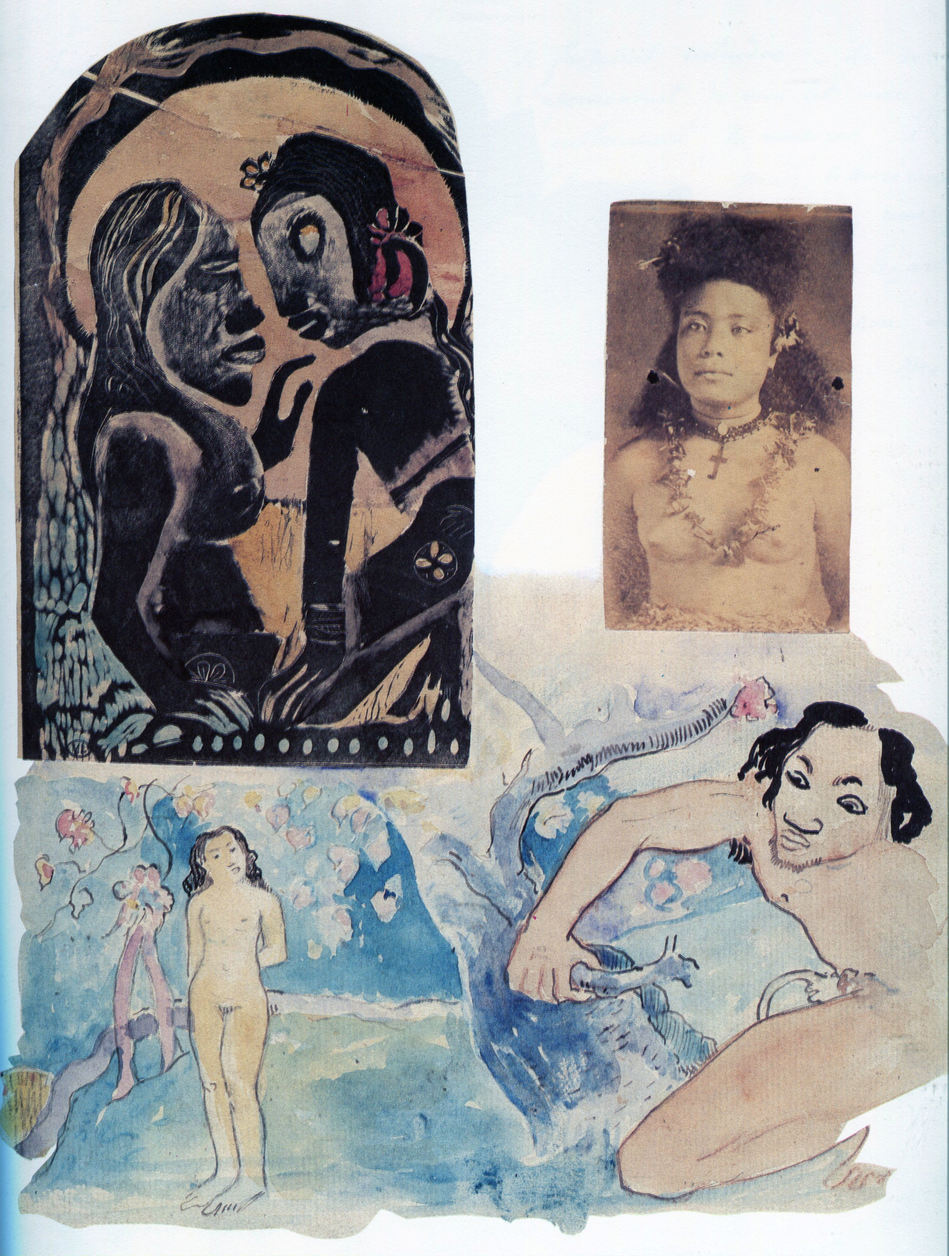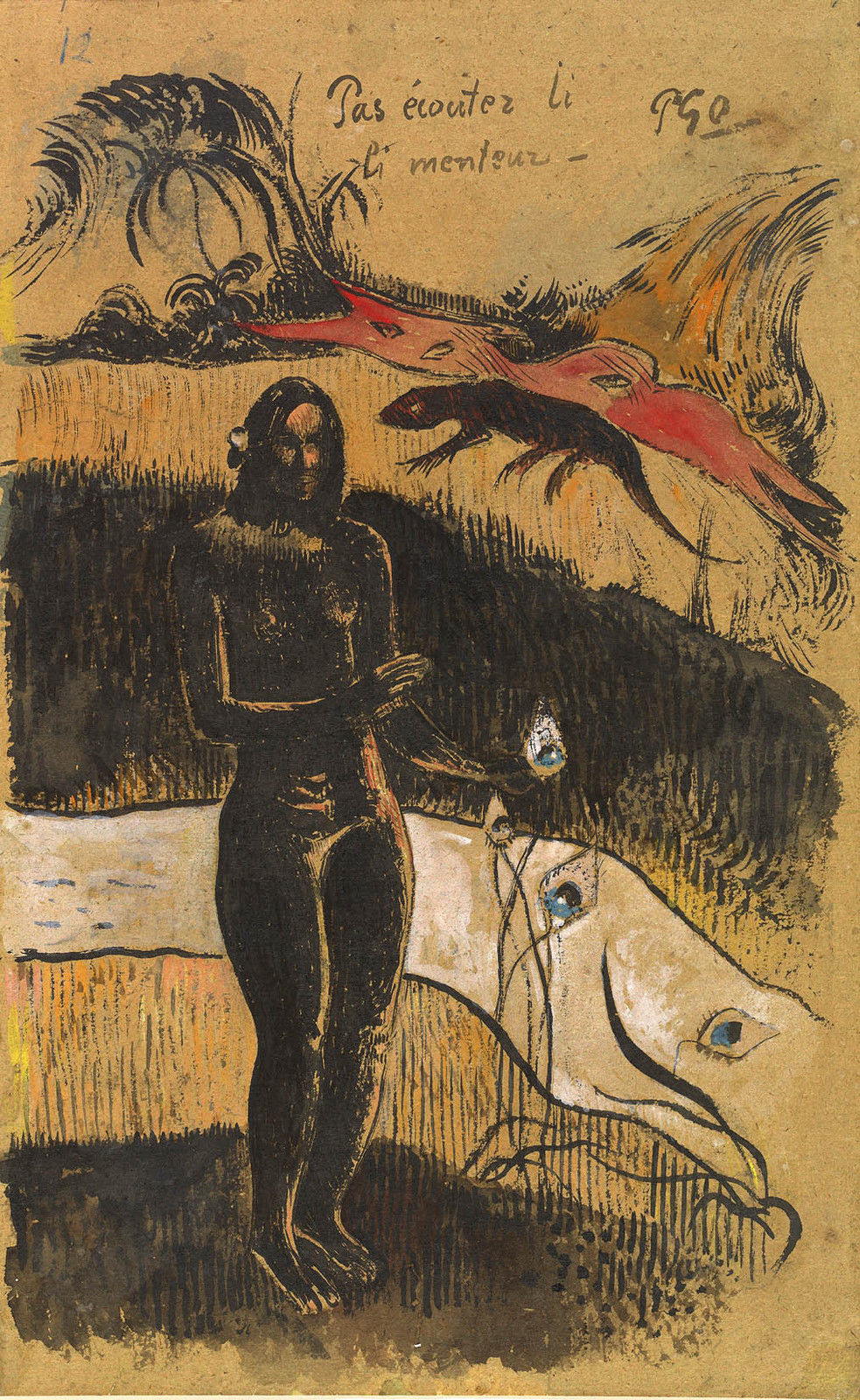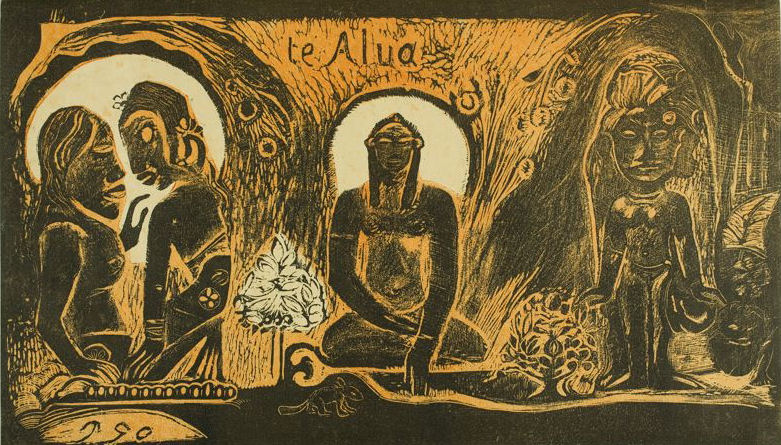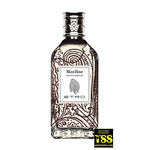Want to Waft of a Wahine ? Recapturing the « Noa Noa of Tahiti » - Homage to Paul Gauguin {Perfume Review & Musings}
Want to Waft of a Wahine ? Recapturing the « Noa Noa of Tahiti » - Homage to Paul Gauguin
I once held a heavy silver signet ring with rounded lines in my hand. It depicted what looked like a Tahitian woman's face. The thickish ring, which had the heft of a bishop's kissable band, felt pleasantly weighty. It looked like an artistic sculpture turned finger jewelry. My interlocutor asked me who I thought it was who had made it. He was a friend of the family and just curious to have my young, unadorned yet intuitive guess based on my general reputation, I guess. I spontaneously answered even before thinking all that clearly « Paul Gauguin ? » although I knew him just as a painter. The answer felt obvious to me. And the friend answered « Yes ! » with a pleased smile.
I remembered this artifact as the closest thing I had touched that Paul Gauguin has created with his own hands and owned, after reading Noa Noa : séjour à Tahiti by Paul Gauguin.
Summertime is the best time of the year for wearing luscious, decadent, opulent, tropical white florals to go with the flow, i.e., heatwaves and dilated-pupil scents.
It is a time for borrowing the scent of Tahitian gardenia (Gardenia tahitensis) or Tiaré, one of the most escapist ones you could hope to smell of, while still hearing the sound your heels make on the paved streets of a city, which holds you still captive.
The Monoï Accord
Commercialized under the denomination of « Monoï » according to controlled, French legislative criteria regarding terroir, varietals of coconut and gardenia and stage of maturation since 1992, its perfume has come to be associated with the scent-surround experience of the beach in the summer for French holydaygoers. Like patchouli, it is a relatively new 19th century olfactory introduction having come first to European shores in 1824.
In recent years, the popularity of the scent has been confirmed by its translation into fine perfume compositions retaining the original hedonistic component while becoming more tailored and elegant by design. In one case at least, reviewed below, it has become avangardist. We are breathing in the era of the elevated, cultural Monoï accord having reached iconic, pop or classical status - whichever way you prefer to put it. Nuxe Huile Prodigieuse has had a hand in it of course, but also Hei Poa and Monoi Tiare Tiki Tahiti - the latter a product born during WWII in 1942. Going through the filter of the Paris scene, Monoï has become dressier, brainier. Its fragrance, everyone knows, carries the very air of Polynesia. The association is strong enough to transport you to Bora Bora on a magic Pandanus mat.
When used as a beauty oil, Monoï diffuses inside refined coconut oil or coprah, which extracts the fragrance of the flower in its budding stage thanks to maceration.
I had already started writing my article on Gauguin's olfactory recordings when fragrance company Givaudan happened to ask on LinkedIn what was the fragrance one most associated with summer. For me - and a host of other persons steeped in French olfactory culture - the answer is pretty straightforward: Monoï Is the first scent of summer that comes to mind - of its anticipation even when it is not summer yet.
The history of art reveals that there existed a French poet who sang the beauties of the Tiaré flower long before the Monoï craze, and this poet is none other than Paul Gauguin.
A Forgotten Reference of Olfactive Culture: Paul Gauguin
French painter Paul Gauguin (1848-1903), the seeker of Tahiti and the promise of original purity and paradise it held, wrote a travelogue and episodic diary of his stay on the island from 1891 entitling his journal Noa Noa : séjour à Tahiti (or Voyage de Tahiti). The scent of Gardenia Tahitensis takes pride of place in his essay as more than an exotic motif - just like in his painting.
In his, often, rapturous account, the phrase « Noa Noa ! » turns into a leitmotiv chanted like an incantation to beauty, to the satisfaction of one's senses, to moments of both spiritual and olfactive epiphanies. By uttering those very words, he in fact seems to add to the fragrances of the world around him as if he were saying the rosary and Tiaré blooms fell off his lips. Pronounce the magic words, and it will smell more fragrant !
"Noa Noa" means « fragrant » or « richly fragrant ». Cacharel created a perfume called Noa which is mainstream enough, but Gauguin's book is much less known yet worth reading for its literary qualities and insights into the mind of a creative genius - and last but not least, for its fine attuning to the sense of smell.
Gauguin, the painter, notices for instance at one point that the Tahitian vegetation is so inextricably luxurious that his guide in the mountain seems to find his way thanks to his sense of smell more than his sense of sight.
« Noa Noa » is often proffered when describing the scent of Tiaré and its enrapturing, invisible coils of fragrance, but it also describes the general fragrant atmosphere of the island, which is also "Noa Noa" as if it were a specific physical milieu filled with fragrance.
I would like to quote a passage in which he describes a natural, pervasive perfume accord, which sounds retrospectively like a brief for a niche perfume brand to be recreated one day. The artist does not shy away from evoking the naturalness of the combined scents of (menstrual) feminine blood and gardenia he could pick up from the « vahinés », the French word for wahine. Some anthropological studies have noted that in some cultures, the scent of the sex of a woman is less suppressed, more noticeable even in a standing position. If perfumery has turned to Tiaré, it's however never been for such realistic, even naturalistic pairings. To re-imagine the original olfactory culture in which Tahitian gardenia thrived for Gauguin, you can listen to his voice telling us that,
« A mixed perfume, both animalic and vegetal, emanated from them, the perfume of their blood and the perfume of gardenia flowers - tiare - which they wore in their hair. « I teie nei e mea rahi no' ano' a (now, very fragrant) they would say. »
This brutalist Tiaré perfume is yet to be recreated two centuries later.
Meanwhile, here is a short list of both beauty oils and fine fragrances which smell particularly good as they surf on the hedonistic notes of Tahitian gardenia.
Beauty Oils
Apart from the oils cited above, we call attention to the following one.
Review of Hei Poa Monoï de Tahiti au Monoï 1000 Fleurs
« 1000 Fleurs » means « one thousand flowers ». No, this is not a Maoist slogan but a reference to the 1000 flowers used per liter of the product. 1000 blooms of Tiaré, frangipane, hibiscus, Kau Pe, Ylang Ylang and lotus are macerated in 1 liter of coconut oil sold in 200 ml bottles. There are zero preservatives.
The exotic character and beauty of a bouquet of tropical white flowers hits the nose immediately. The fragrance composition is more complex than you might expect to find in a body product. The frangipani and gardenia smell of green bananas and coconut too. The perfume, after an initial explosion of sensations, calms down to remain like a murmur on the skin. It has to, if its main objective is to cover the whole body.
Fine Fragrances
Each perfume's personality is matched with a characteristic moment of Paul Gauguin's experience of Tahiti.
Review of Yves Rocher Monoï Eau des Vahinés Eau de Toilette
While Yves Rocher proposes both a beauty oil and edt in their Vahinés range, the eau de toilette is the better product to focus on. It's reasonably priced while delivering a rich, buttery-fresh scent of Tahitian gardenia laced with ylang and vanilla. It does not last for eons on the skin but its price point and size allow you to reapply frequently. This is a great pick-me-up scent. It smells like a promise of vacation to Bora Bora.
This would be the smell of Tiaré to Gauguin in his most innocent and naive phase, the discovery stage, when he arrives in Papetee. He has not yet garnered a more complex knowledge of Tahitian society by becoming a "savage".
Notes : tiaré blooms, ylang ylang, vanilla.
Review of Annick Goutal Songes
This is the « meanest » of the Monoï perfumes on this list. By this we mean that it eschews being just harmonious. It goes against the grain. The jasmine evokes the scent of oil as in fossil fuel or petrol. Someone just said « boules de naphtaline » (mothballs) by my side. It's noticeably spicy, as in spice box and as in carnation. The composition dances a devil step around the beautiful, innocent scent of Tiaré suggesting tropical rot under the banana leaves, asa foetida trapped by sweat, cumin, caraway - and even a hint of curry. A pinch of freesia freshens up the scent but this is mostly a languid, voluptuous concoction with its eyes circled with the blackest black Khol. The composition by perfumer Isabelle Doyen juggles putridity, death sun, flowers, spices, life in an ever moving circle.
The woman who wears this is not only a seductress, she is a magician, but not yet a priestess. The perfume is mysterious yet carnal rather than spiritual. This would be a perfect match for all the mythologizing on Hindu religions that Paul Gauguin indulges in in Noa Noa, as well as for all the sexual innuendos his diary contains. It even manages to smell of old paper and old books stained by a lick of vanilla ice-cream.
I reviewed the eau de toilette version as I do not have the eau de parfum on hand. The edt is a very compelling work on the morphing limits of beauty and ugliness. Recommended for connoisseurs.
Notes: Frangipani flower, Tiaré flower, Sambac jasmine, ylang-ylang absolute, Bourbon vanilla absolute, benzoin, patchouli, cinnamon, cumin, black pepper.
Review of Guerlain Terracotta
I wrote two years ago that,
« As Terracotta hits the skin, so does a lovely rich blooming effect of flowers bathed in Tahitian Monoï oil. It remains more nuanced and delicate than the skin product itself used traditionally by Polynesian wahines to beautify skin and hair. »
Released as a limited-edition, it quickly became a bestseller. It is still in production today. Review here.
This would be the Tiaré scent to wear at one of the official, kingly Tahitian ceremonies where a bit of formality cuts through the naturalness of the Tahitian gardenia.
Review of Nuxe Prodigieux Le Parfum
The composition is inspired both by their cult beauty oil and by the coconut-y accents of drippy gardenia, or Monoï. Both products' scents are created by the same perfumer, Serge Majoullier of Mane. This edp creates the very pleasant illusion of a jasminey, salty and creamy Tahitian gardenia made sharper by white musks and woods. The rose note adds sophistication and depth. It's a very solar scent, easily suggestive of heat at noon on the beach. It's also light and breezy as if tropical air currents were perfuming your hair. This would be terrific as a hair perfume. It would also be about Paul Gauguin simply at the beach.
Notes : Bergamot, mandarin, orange blossom, rose, gardenia, magnolia, vanilla, coconut milk.
 Review of Jean-Charles Brosseau Les Fleurs d'Ombre Ombre Bleue
Review of Jean-Charles Brosseau Les Fleurs d'Ombre Ombre Bleue
I am including this fragrance by one of the greats, Michel Almairac, for its solar quality and the note of Tiaré it features. This is not a Monoï accord perfume per se, in the 2016 sense, but it does contain an explicit homage to the Pacific ocean, as well as to the Atlantic ocean, the latter thanks to plum and maritime carnation notes. It is richly decadent, like the effect of Monoï, with a hint of Romantic wistfullness and a retro vibe. I see it as a bridging perfume between the original milieu of Paul Gauguin in France, which he tried to escape as best he could, and the scents of Tahiti, of his customary Tahitian wife, Tehura. One could elaborate on the dark side of Paul Gauguin's love affair with Tahiti, but this is not the time and place.
We can however retain his universalist incantation to unite all perfume worshippers: Noa Noa!
Notes : carnation, orange blossom, muguet, centifolia rose, lily, jasmine, cedarwood, benzoin Siam, styrax, balms, sand, sea, dried fruits and honey.
We will add to this list when we can and following the evolution of this perfumery genre.











